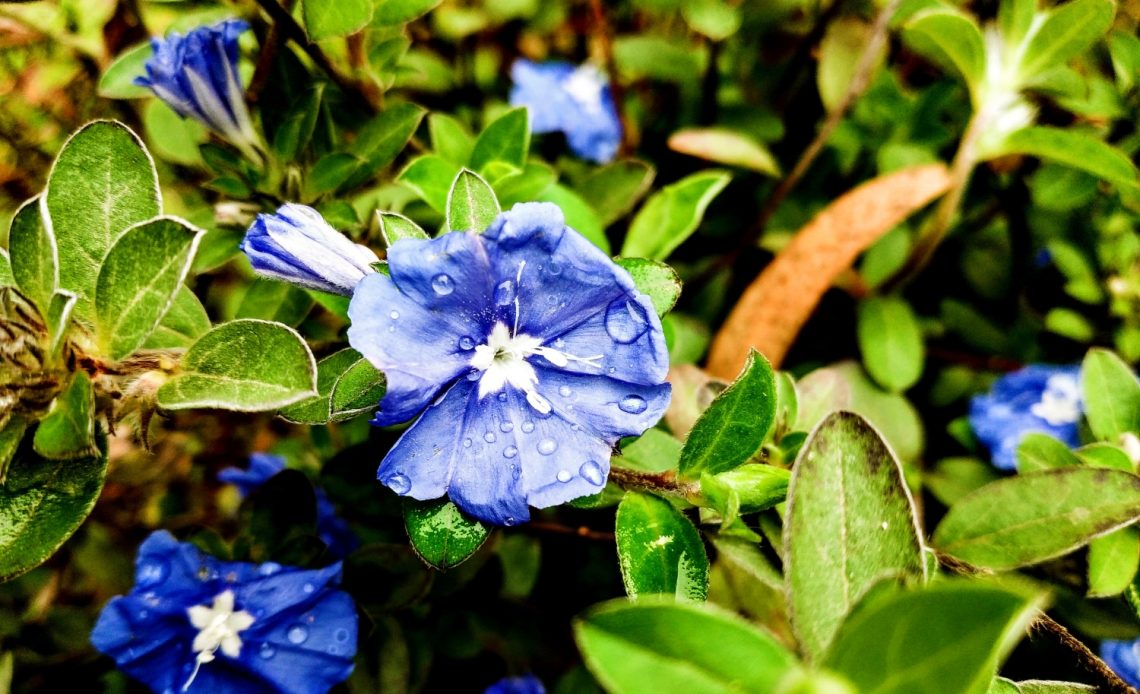

We’re here to help! Wild Yards is a completely free website that is 100% dedicated to helping you create a wildlife-friendly, sustainable yard. Read more
WildYards is reader-supported. When you buy a product through a link on our site, we may earn a comission. Every product is independently selected by our (obsessive) editors and our reviews are unbiased and objective. Read more about our mission or our privacy policy.
With their beautiful trumpet-shaped flowers and deep green heart-shaped leaves, morning glories are a great way to dress up old arbors or cover bare spots in a flower bed. These blooms come in a variety of colors, including purple, blue, red, and pink, and because they grow in zones 3 through 10, they can tolerate a variety of climates. Contrary to popular belief, morning glory seedlings are easy to transplant. But how can you tell when to transplant morning glory seedlings to your garden?
Morning glory seedlings are ready to be moved once they’ve developed 2 to 4 true leaves, and are approximately 4 to 6 inches tall. When transplanting morning glory seedlings, try to disturb their roots as little as possible to prevent transplant shock and increase their chances of survival.
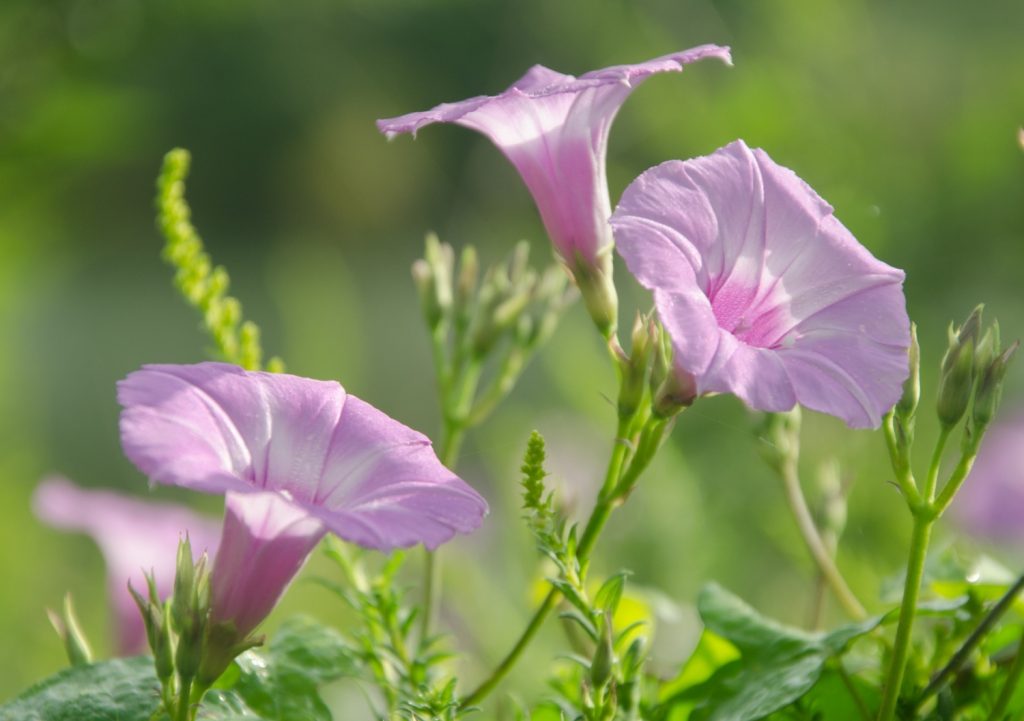
Are morning glory seedlings really hard to transplant?
It’s unclear how this myth got started, but, no, morning glories are not all that hard to transplant from seedlings. As is the case with most plants, morning glories don’t like to have their roots disturbed. If the seedlings are handled roughly, or if they are kept in their pots too long and become rootbound, then they may die shortly after transplanting. But being sensitive to damage isn’t something that’s unique to morning glories. All seedlings are delicate.
Transplanting seedlings is necessary. You’ve got to move young plants from their baby pots to their permanent homes so they can continue growing. But, if you’re not careful, the process can be traumatic for them. If you don’t move your morning glory seedlings at the right time in their growth cycle, they may not survive. So while transplanting young morning glory plants is no more difficult than transplanting tomato seedlings or squash seedlings, it should not be taken lightly and should be done with the utmost care.
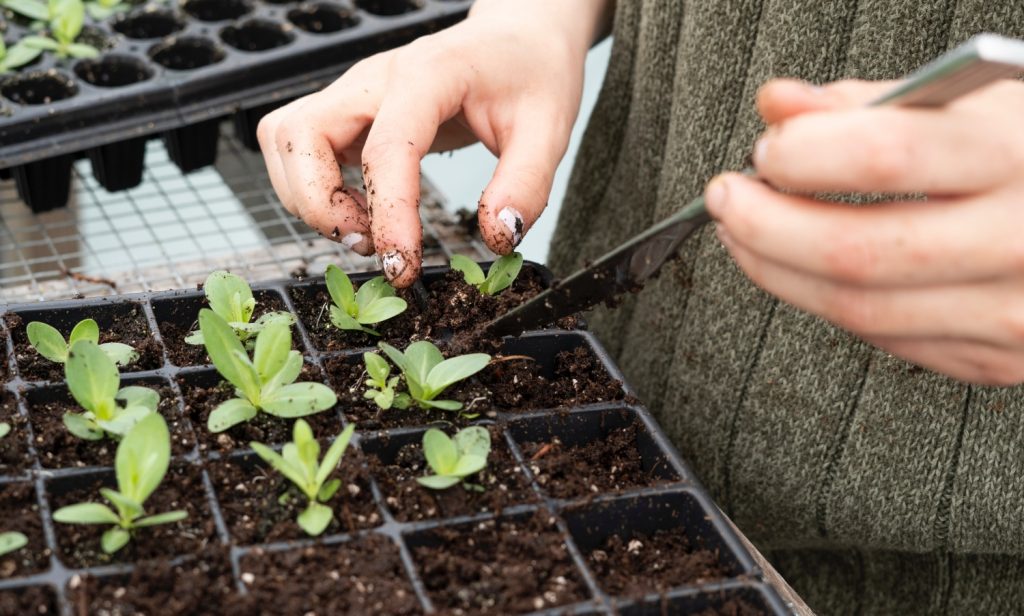
What’s the best way to start morning glory seedlings?
How you start your morning glory seedlings can have a huge impact on whether or not they survive transplantation. Because morning glories don’t like to have their roots disturbed, it’s best to start the seeds in homemade newspaper cups or peat seedling pots. These pots are easy to tear away from the roots when it’s time to transplant. Avoid starting your seedlings in plastic pots, because the seedlings must be tapped and wriggled out of them, which can damage roots and foliage.
Morning glories love nutrient-rich soil that stays moist, but that also drains well. You’ll have no trouble starting your morning glory seedlings in all-purpose potting soil. For best results, mix 40% native soil with 60% potting soil. This allows seedlings to become acclimated to the soil in their permanent home right from the start, reducing their chances of developing transplant shock. Fill your seedling pots ¾ to ⅞ full of soil, and tamp them down gently to remove any air bubbles.
Sow morning glory seeds ½-inch deep using the tip of your finger to cover them gently. Water the seedlings anytime the soil feels dry to the touch, but be careful never to flood the pots. Set your seedlings on a warm windowsill in indirect sunlight. It’s best to start your morning glories 6 to 8 weeks before the last frost of the season, but it’s safe to start them anytime from spring to early summer.
When is the best time to transplant morning glory seedlings?
It can take anywhere from 5 to 21 days for morning glories to sprout, although they tend to germinate more quickly if they’re kept warm. Once they start to come up, be sure they receive 6 to 8 hours of sunlight every day. Placing your morning glory seedlings outside when the weather is warm enough will help them get used to being outdoors, which will increase their chances of survival once they’ve been transplanted.
It’s exciting watching your seedlings grow, and it can be tempting to try to move them to their permanent homes outside right away. But be patient. Moving the seedlings too early can lead to transplant shock which may ultimately kill the plant.
You’ll know that it’s time to transplant your morning glory seedlings when they’ve grown a set of true leaves. When morning glories first emerge, they produce a pair of seed leaves to provide them with enough energy to grow. The next set of leaves they produce are true leaves, and they take on the same heart shape as the morning glory’s adult leaves.
Once your morning glory seedlings have 2 to 4 true leaves and measure roughly 4 to 6 inches tall, they’re ready to be moved to the outside world. If the temperatures outside are in the 40s and 50s, it’s too cold for your seedlings to be transplanted. You’ll have to move them to larger pots and wait until it warms up outside before you plant them (more on that in a bit).
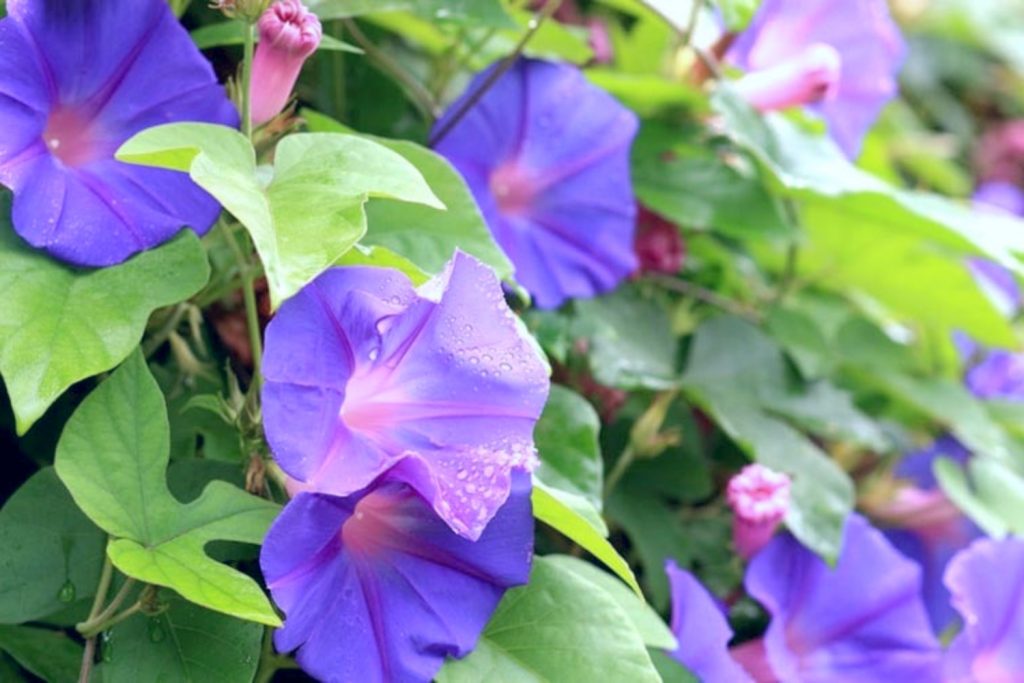
Where should you plant your morning glory seedlings?
Once your morning glory seedlings are ready to be transplanted, it’s time to pick a good spot for them to grow. Morning glories prefer indirect light in hotter climates, but they can tolerate full sun in more temperate regions. Use a hand trowel to dig a hole twice the size of the seedlings’ seed pots. Break up the soil so it’s nice and loose, and remove any rocks, sticks, or other debris that might interfere with root development.
Take this opportunity to assess your soil. Is it loamy and full of organic matter that will provide nutrition and allow for good drainage? Or is it clay-rich and compacted and in desperate need of some fertilization? Be sure to amend the soil as necessary to improve your morning glory’s chances of survival. Try mixing some potting soil or homemade compost into the seedlings’ new holes to improve nutrient availability.
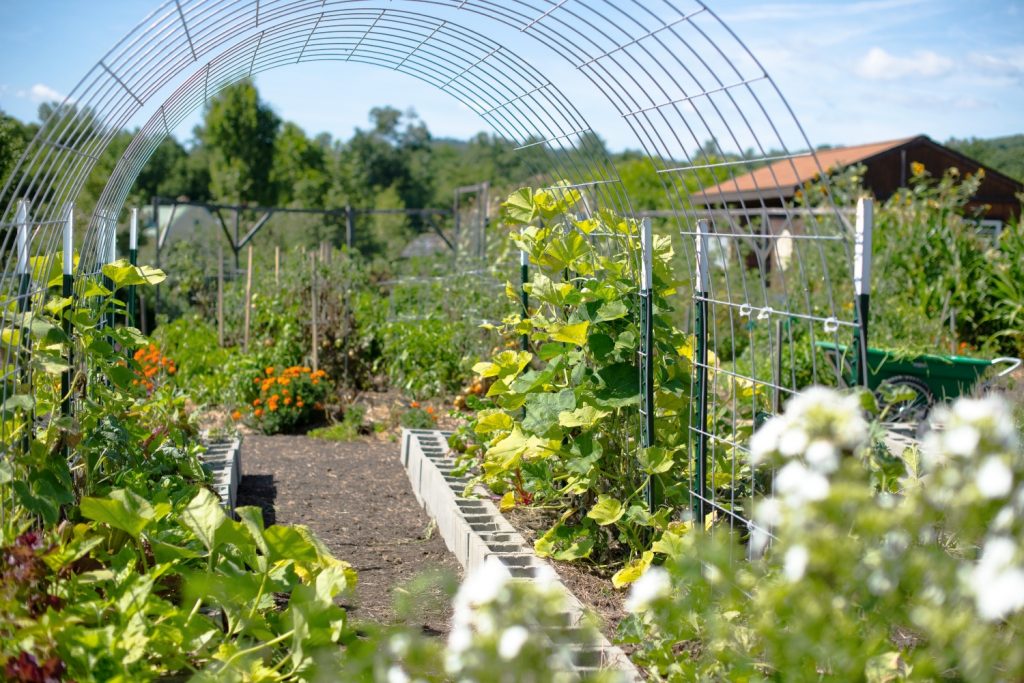
How should you transplant your morning glory seedlings?
Once their new homes are prepared, it’s time to transplant your morning glory seedlings. Be sure to water the seedlings a few hours before transplanting them. It’s much easier to keep the soil in place if it’s moist than if it’s dry. If you started your seedlings in peat seed pods, you’ll need to soak them for a few hours so they’re easier to tear away from the plants’ roots. If you used newspaper cups, simply cut them away with scissors.
Work gloves may keep your hands cleaner, but they can make it difficult to feel what’s going on, so use bare hands when handling your seedlings. Hold the seedling gently by the roots, careful not to agitate them or jostle the plant about. Set the seedling in the hole and backfill around it, tamping the dirt as you go to eliminate air pockets.
Once your seedling is all settled, give it a good watering. Newly transplanted seedlings require a lot of water, so be sure to water them daily for a week or two. And be sure to monitor how quickly water drains. If the soil is losing water too quickly, try spreading a layer of mulch around the plants to help them retain water.
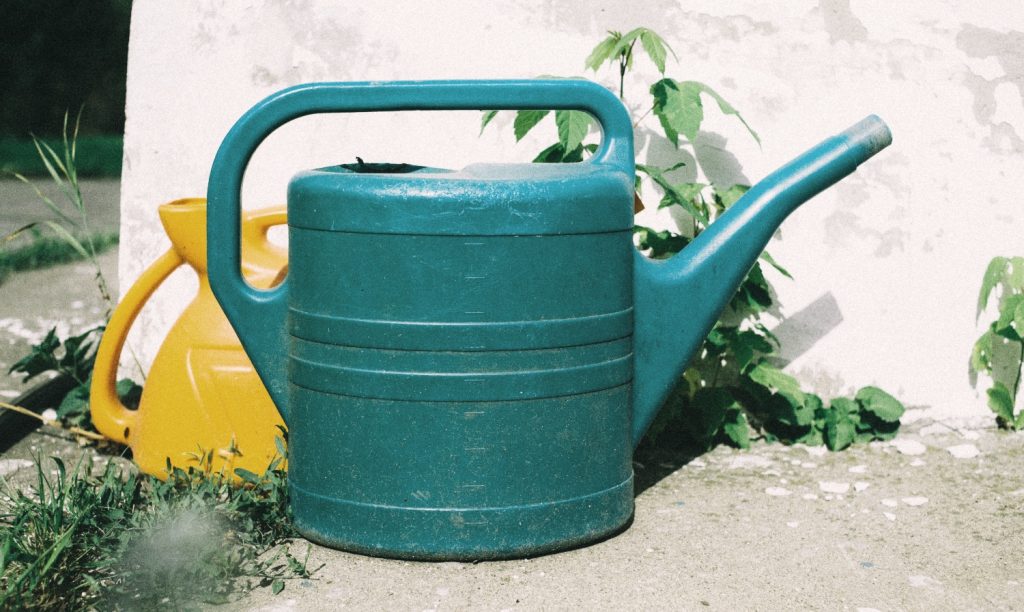
How to transplant morning glory seedlings to bigger pots
If the weather just won’t cooperate and you’re forced to keep your morning glory seedlings indoors a bit longer, you can prevent them from getting rootbound by transplanting them to bigger pots. Choose pots that are at least twice the size of the seed pots.
When you’re ready, take a seedling, cut its pot away, and center it in the new pot. Using a mixture of potting soil and native soil, fill around the seeling making sure that there’s enough dirt underneath the plant’s roots. Once the soil surrounding the seedling is level, water it and place it back on its warm windowsill until the temperatures warm up enough for the seedling to be transplanted outside.
How should you care for your morning glories once they’re in their new homes?
Morning glories are pretty hardy plants. Once they’ve become established in their new homes, they won’t require much help from you. But in those first few weeks after transplanting, monitor them closely for signs of stress.
One major threat to morning glory seedlings is foragers. These plants are very popular with rabbits and deer. While homemade Dawn dish soap deer repellent can help deter these pesky critters, they can still cause tremendous damage to young plants even if they don’t eat them by tearing up young leaves and spitting them out. So if you have a lot of wildlife in your backyard, consider using chicken wire to construct a barrier around your seedlings to keep them safe from hungry animals.
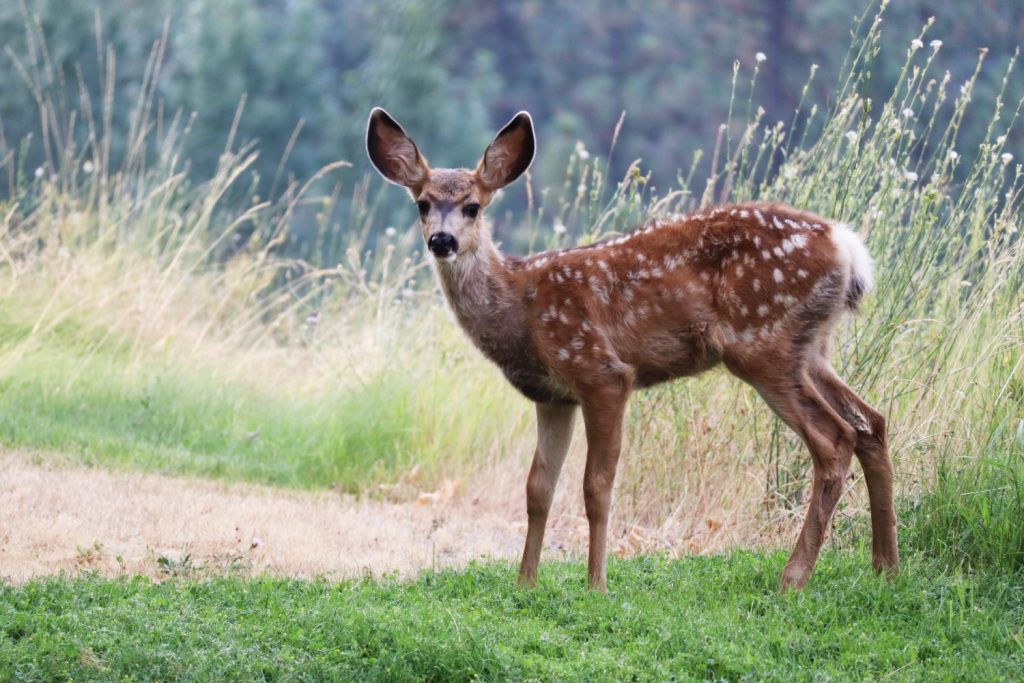
Is transplanting morning glory seedlings worth the time and effort?
In spite of their finicky reputation, morning glory seedlings are actually very easy to transplant. As long as you’re careful not to damage their roots or leaves, you can easily move your young morning glory plants to their permanent homes outdoors. Once established, morning glories can grow up to 15 feet a year, quickly transforming old fences and tumble-down structures into eye-catching focal points for your garden. Their speedy growth and self-sufficient nature make starting your own morning glory plants from seeds well worth the extra effort.

Hi! I found your article to be really informative and I thank you for the guidance. I love Morning Glories but have had issues in the past with some that I started from seed myself. Greenhouse bought plants did great. I will take your advice and hope to have an amazing summer with plenty of blooms. Thank you! 🙂
Hi Rose! So glad you’ve found this post helpful — wishing you the best of luck with your new round of morning glory seeds!